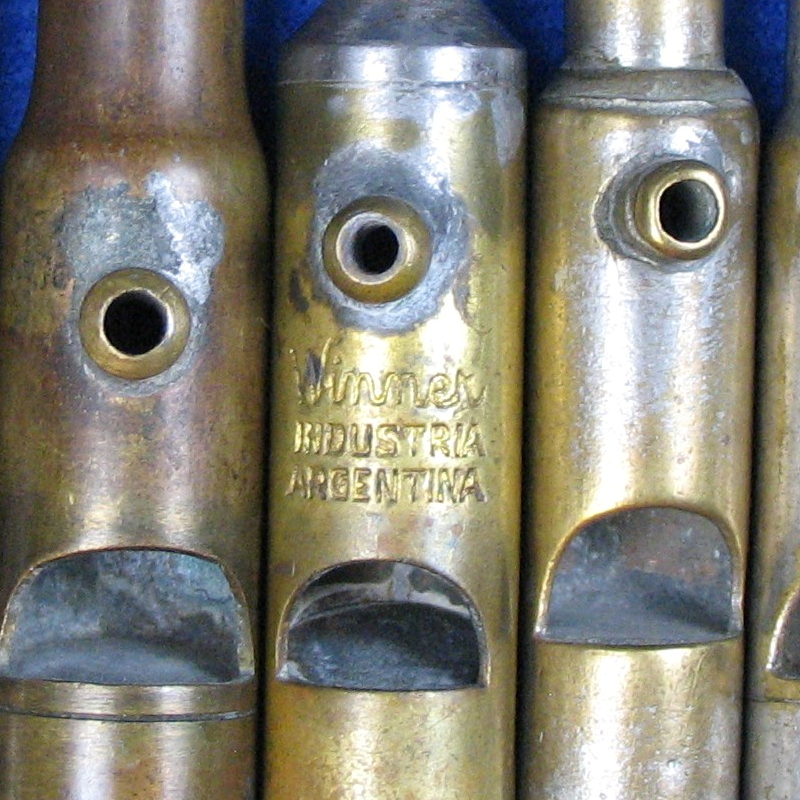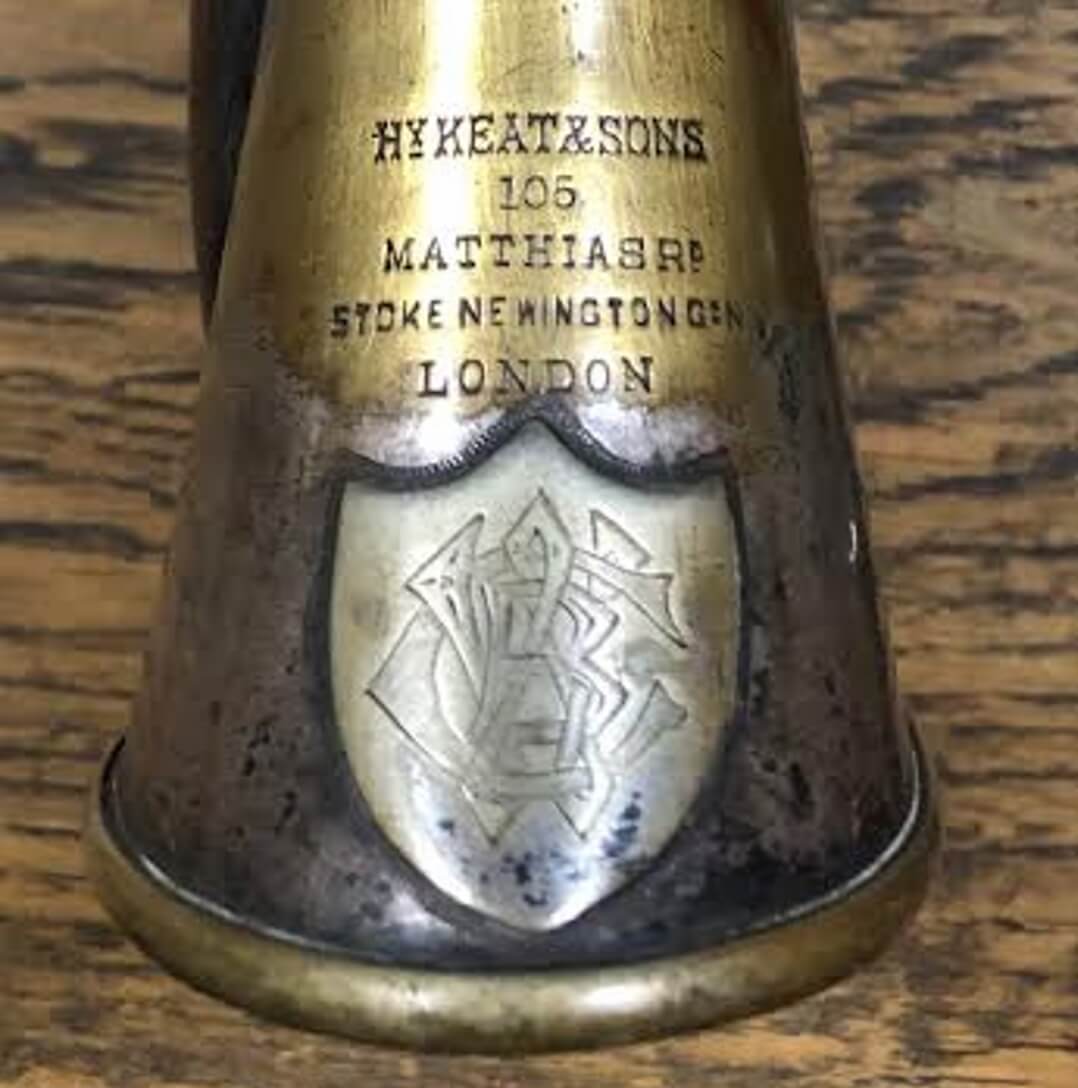Spotlight > Whistle Maker by Country > United Kingdom > Porteous > 014 Six Tube Porteous Wind Instrument – Registers 1845, Special Edition
Whistory
The Porteous Wind Instrument was registered as a design in 1845. How much before that date it was manufactured is unknown. Richard Porteous was a band leader, writer and premier whistle designer. — — See SPOTLIGHT # 53.
What About Wind Instrument Whistles are Known?
As time has progressed his 1845 Wind Instruments have surfaced in different models. 3 tubes in three sizes, 4 tubes in two sizes. Now a six-tube appearing to be mono-typical is being described here.
These have typically been credited to Stevens and Son in literature and on the web. This has never been substantiated.
Why is this significant? Because we need to keep our minds open to change, not only of previous knowledge of whistles, but of the makers themselves. In this case each time a whistle by Richard Porteous arises, previously unknown, it helps to build a picture of the maker/designer.
Whom Made Wind Instruments in Whistles is Unknown?
For example, if Porteous is the designer, did he also manufacture them? If not, then who did he contract out to? For a certainty late in his career in his last years, he did use Stevens and Son, but whistles extant indicate that it wasn’t until the mid-1860s. If this is so, who made this remarkable whistle 15 to 20 years prior ? What was their relationship? Did they also make the even earlier Porteous Field Pipe? Were other whistles made for him and not by Stevens?
Each whistle brings us a step closer. All the Wind Instruments reflect his background of being a band leader involving musical instruments. Perhaps he used a musical instrument maker during this time period?
J Stevens and Porteous in Whistles and Wind Instruments
J Stevens and son have always received the credit for all of Porteous’ whistles, likely because much later they did indeed make whistles for Porteous with both names stamped together. Stevens may have been contracted by Porteous or some other financial arrangement was made.
These wind instruments were designed for railway, police and sporting in mind and advertised as such much earlier. No mention in any advertisements or records has ever been made of nautical use as has been claimed. The name Stevens and son’s does not show up on any of these multi-tube whistles —- nor any other of Porteous’ early whistles.
Whistle Classification
| Category | multi-tube |
| Order | Richard Porteous |
| Type | railway |
| Class | brass |
| Sub Class | six tube |
Whistle Archeology
See Spotlight numbers 15 ( updated to 53 ) 16 & 53, 80
Whistology
First off, compare it to the four tubes, previously thought to be the largest model. It is massive and hardly comfortable to carry about.
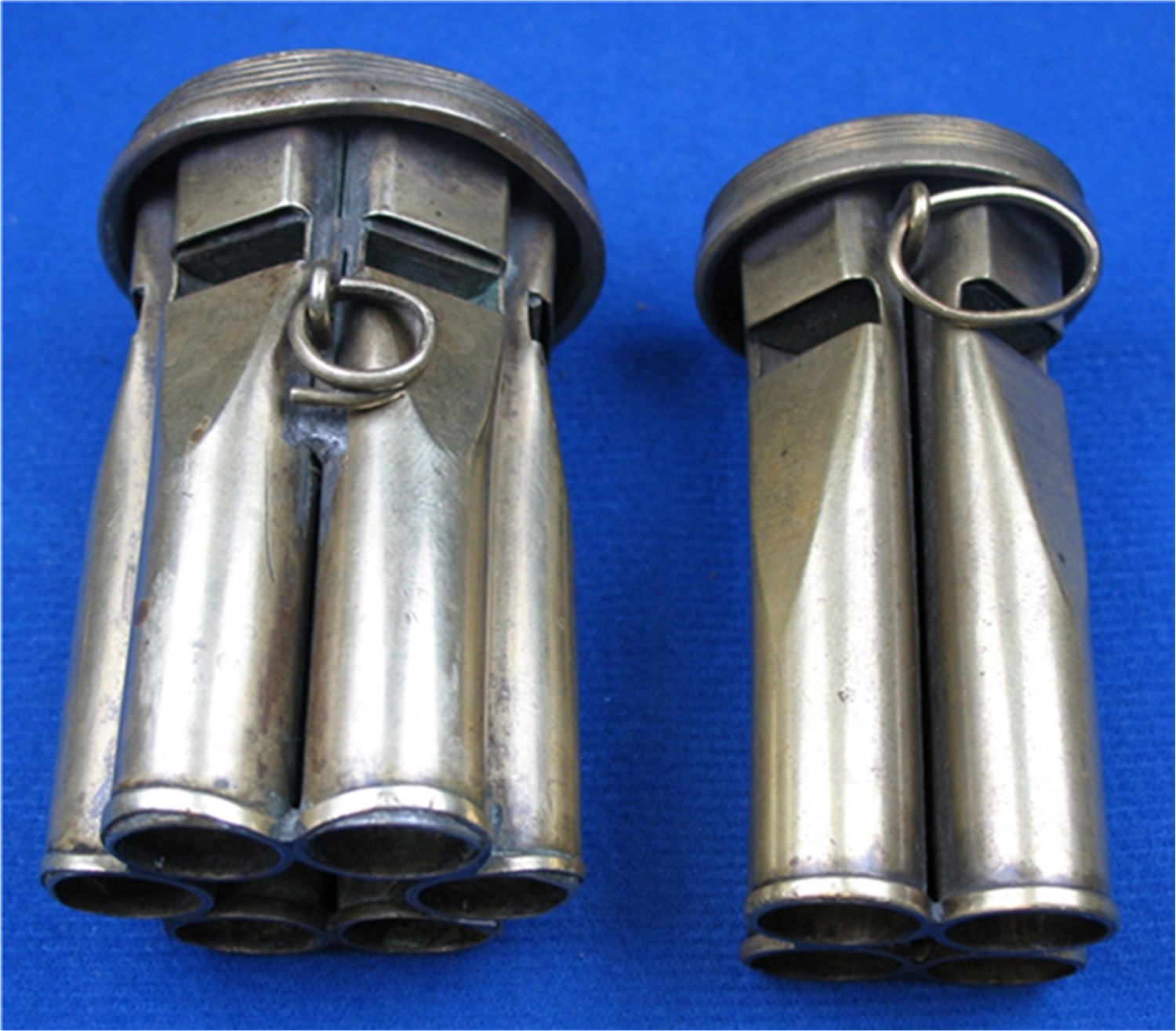
It was previously thought that 3 and 4 tube models of these whistles were the extent of this outstanding designer’s registration ( both originally registered in 1845. ) Now we see that there are more ‘wind instruments’ to discover.
All three have the same registration dates on them, although it is indicated that Porteous was making them some years before hand. This makes one wonder if there are other designs of possibly two tube or five tube ?
Examples of the Porteous Wind Instrument
Presented here are some comparisons from the reference collection….
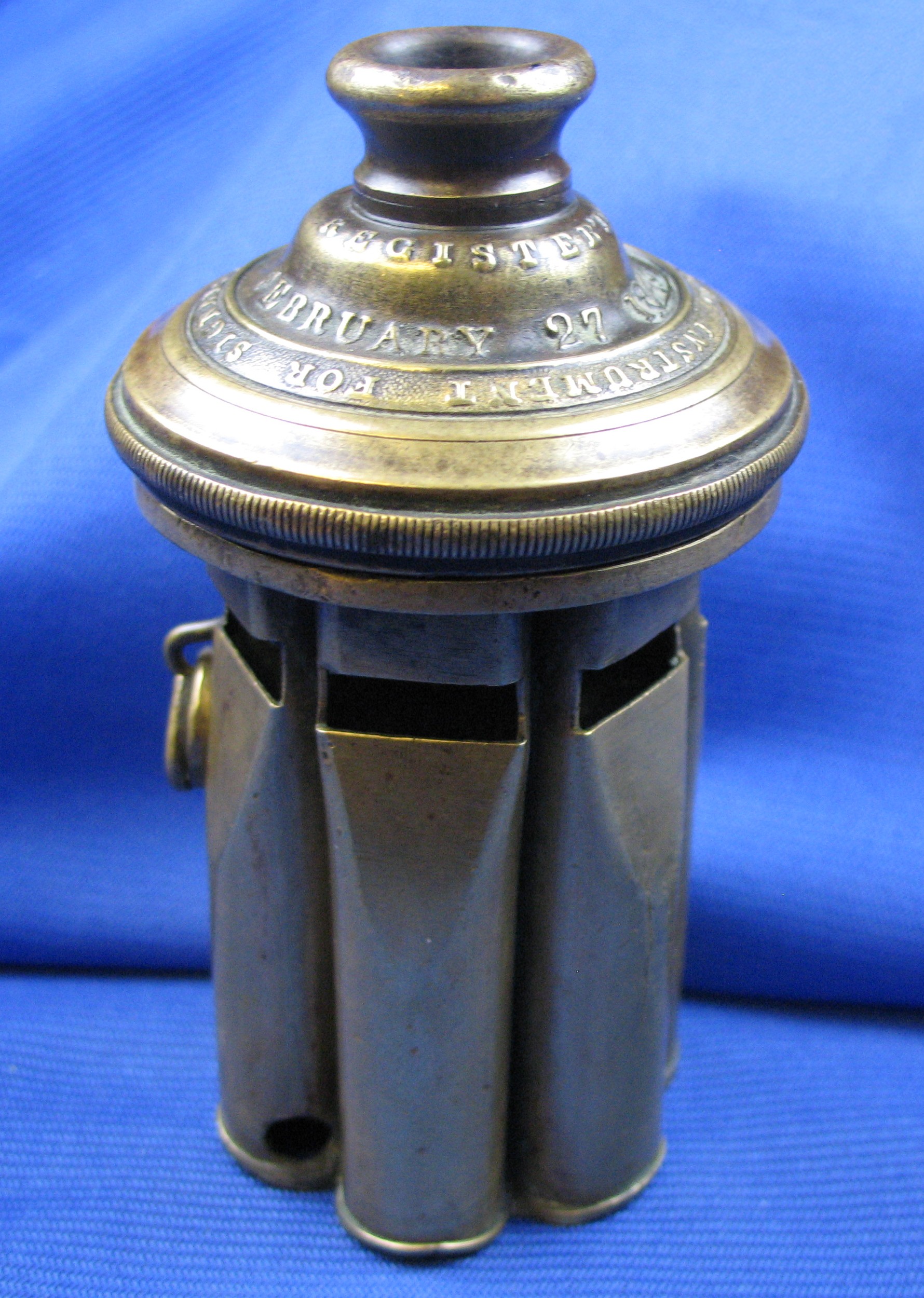
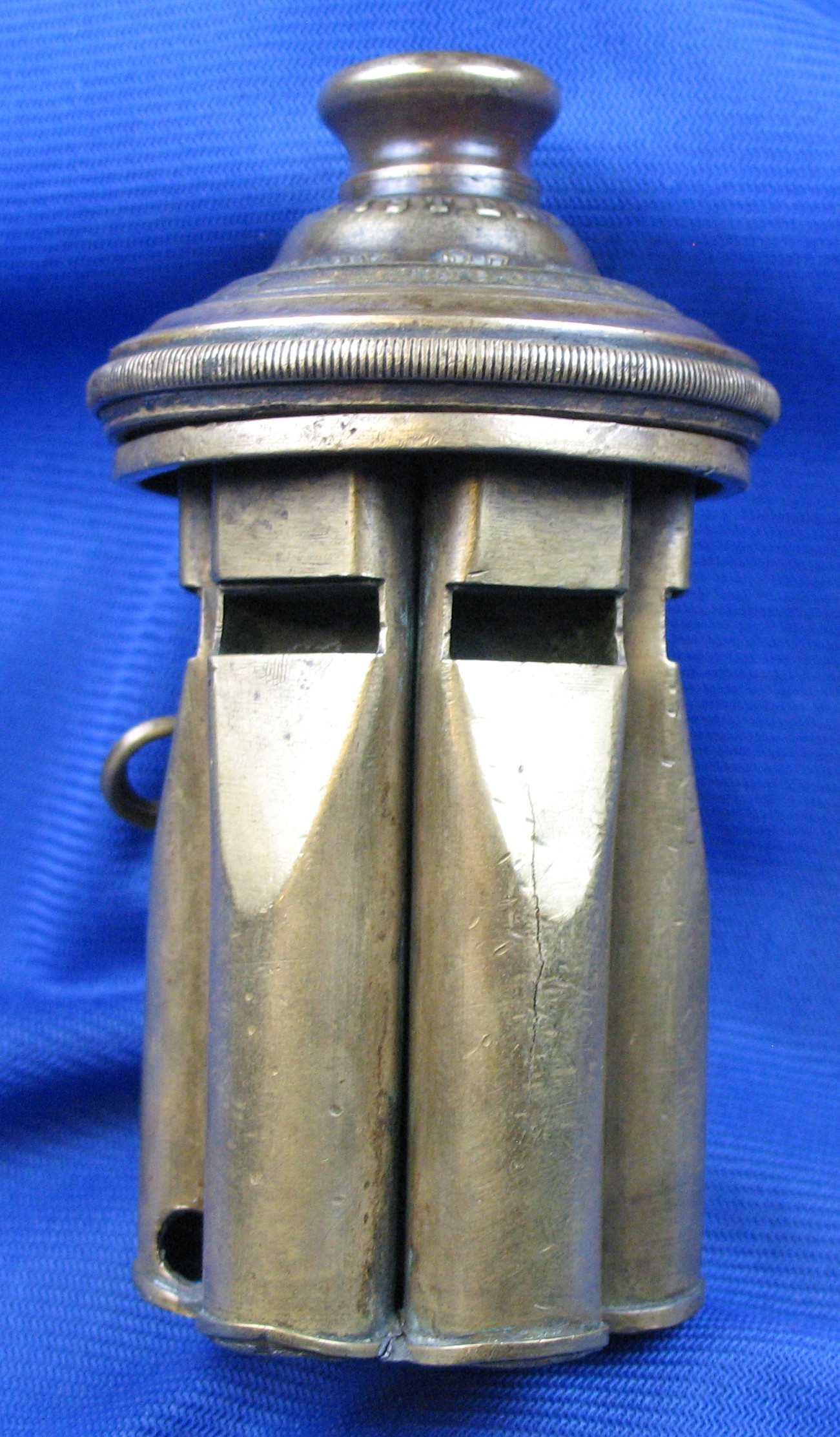
All three models now known have holes in one tube (for hanging ?? or sound ?? ). The tops unscrew for cleaning the tubes and they are solid brass, with cast ornamental tops and solid brass bases.
The six tube is actually the same length as the more common, relatively speaking, three and four tube models. In a coming article it will be shown the different sizes. All utilize the same materials and are entirely made of brass.
The tops are (ornamentally) cast, and their bases are cast also, which then take quite a bit of shaving and fitting.
Still, even after much work the threads on them are on so large a piece, that they are rough fitting, and one has to be careful when attaching them.
Now let’s look at the tubes from the bottom – dramatically different and especially for a hand-blown whistle.
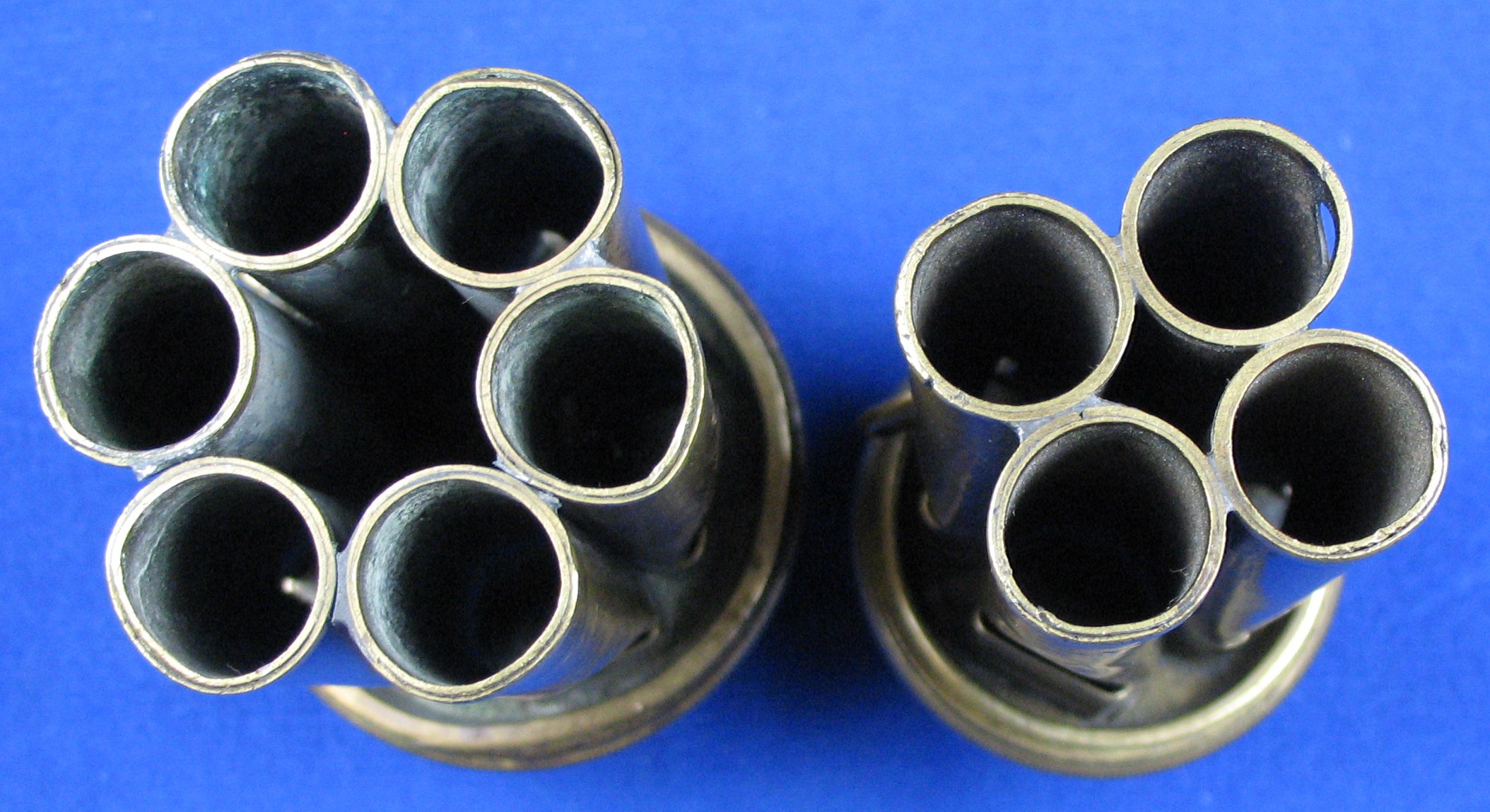
Note all the work that went into not only construction, but also the details of the top casting.
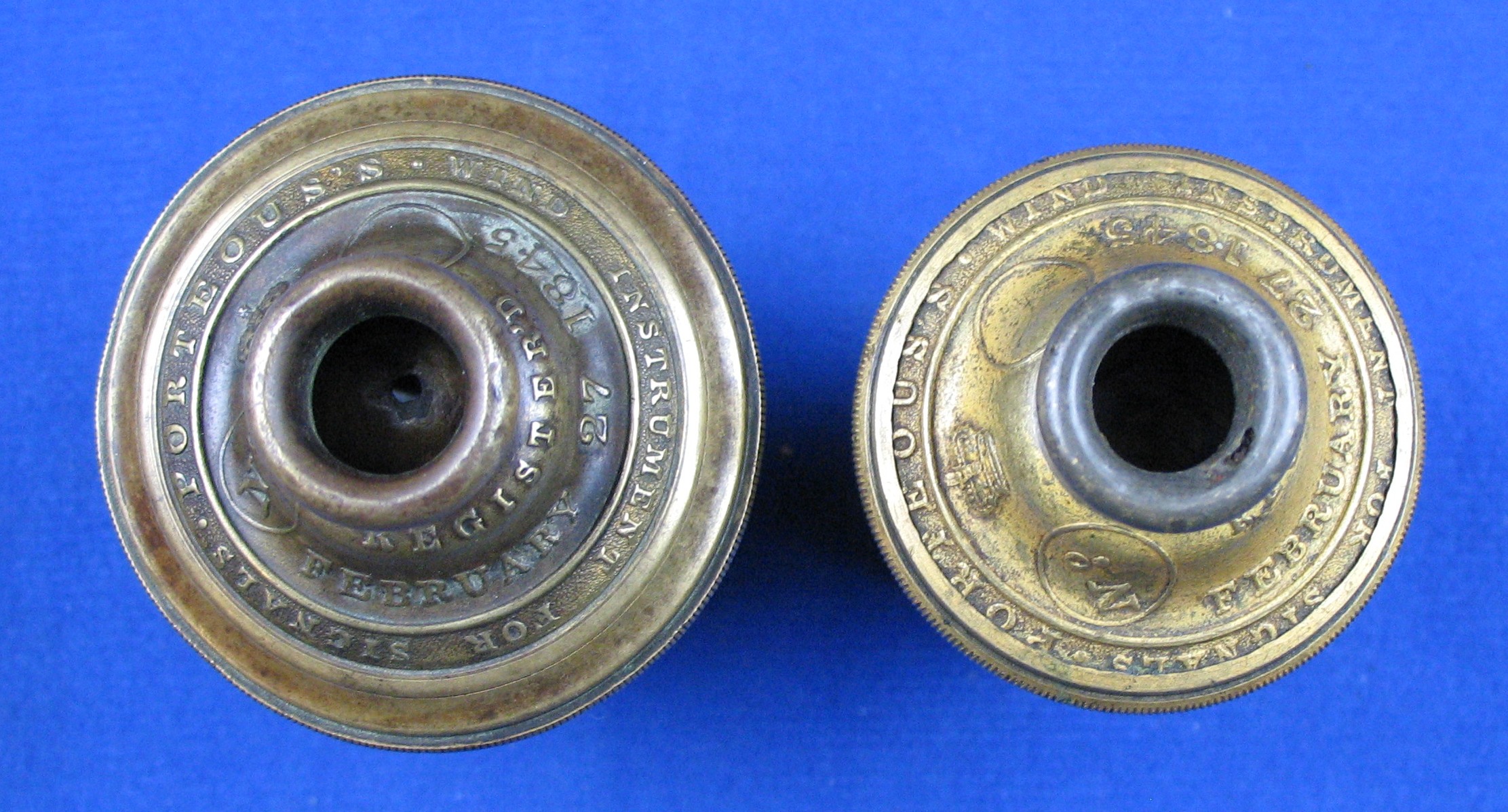
The venting through the top had to be entirely reworked from the 3 and 4 tube designs …
You can see the planning and execution involved. Marketing such large whistles must have been difficult.
The Interior of the Porteous Wind Instrument
Nothing compares for the 1840s in quality, design, size and versatility, yet at the same time these are very cumbersome whistles.
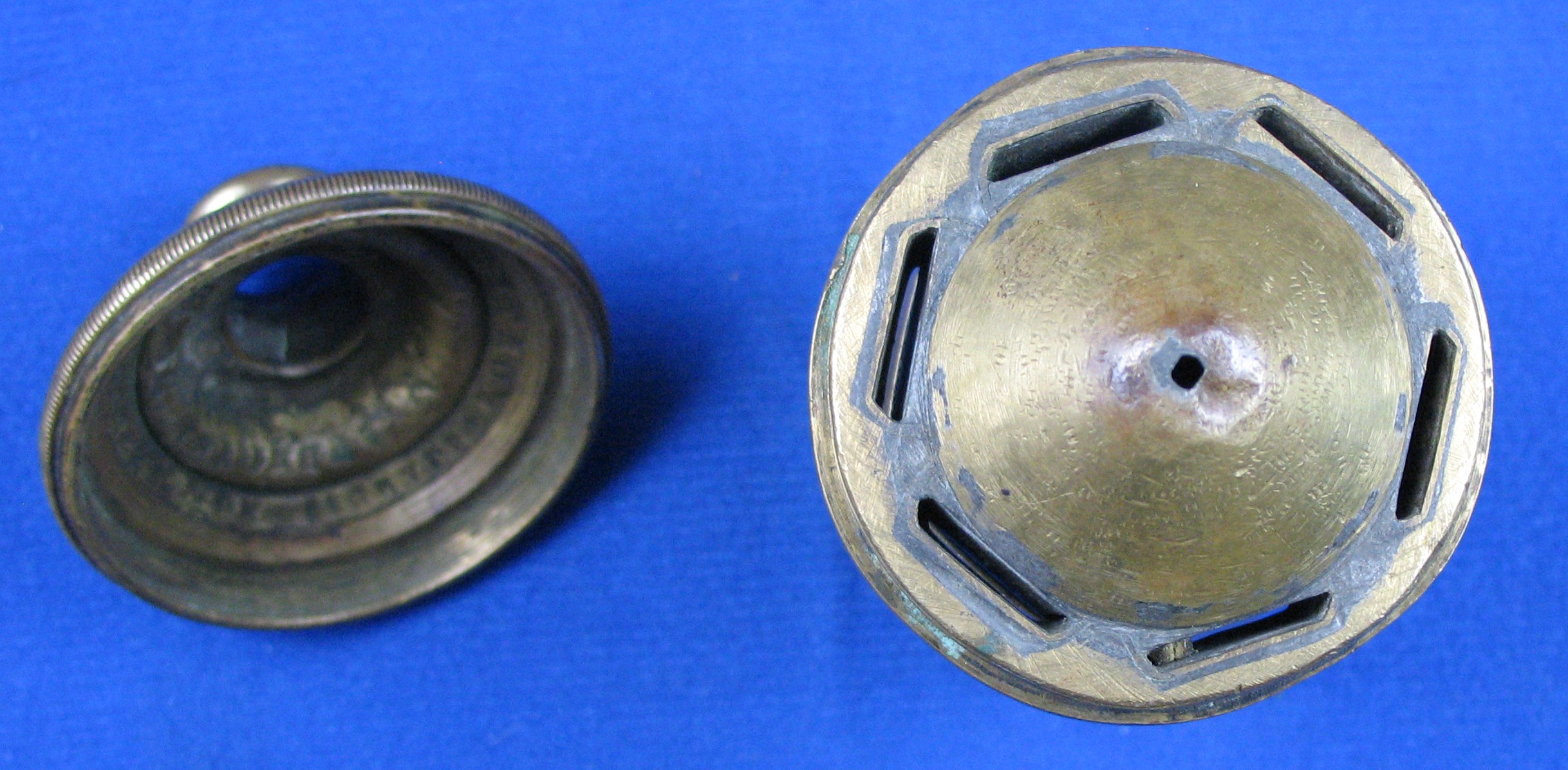
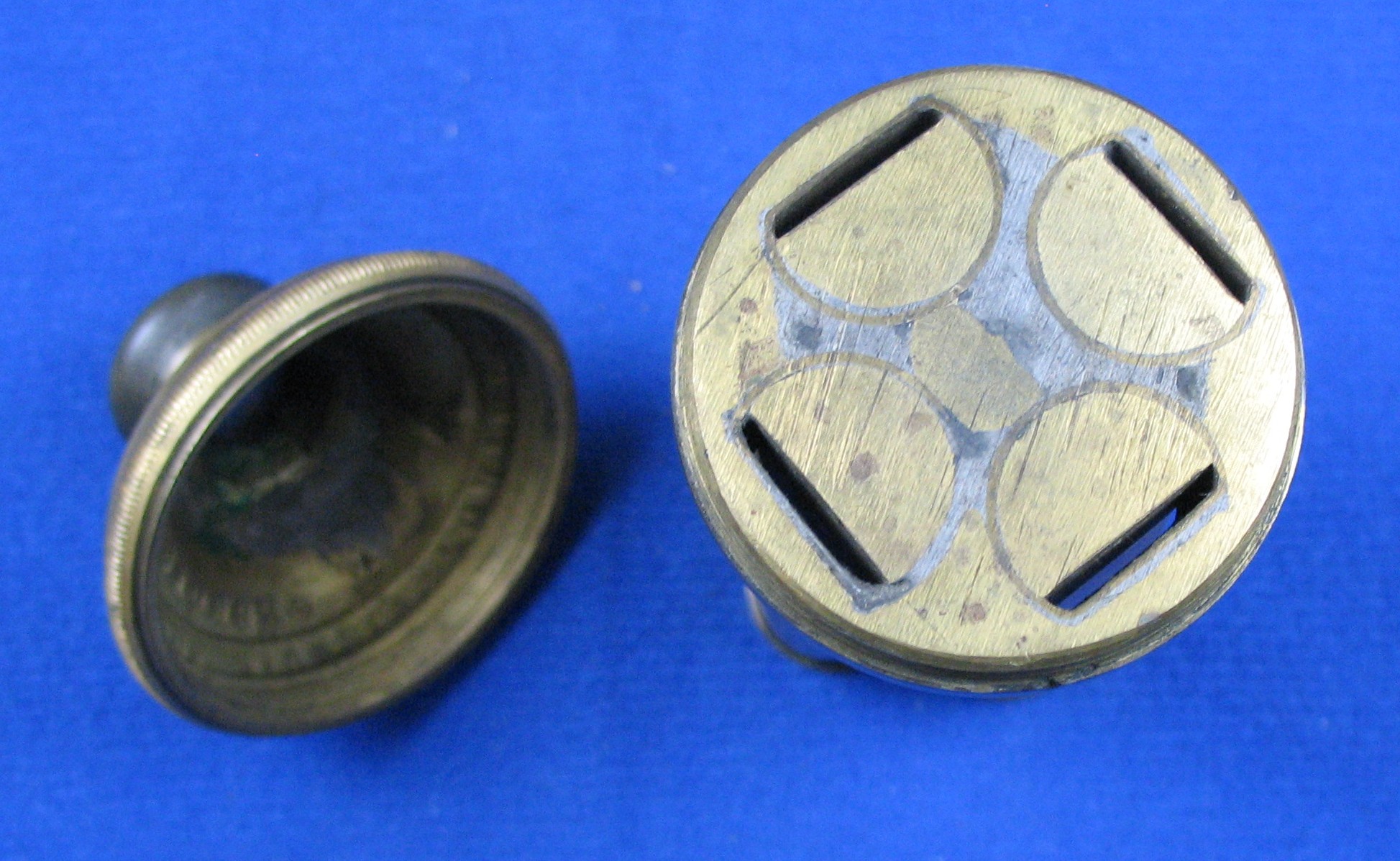
With the center portion came a completely different approach to the interior design, venting the air flow of the 3 and 4 tubes, which also changed all the machine work and production. The top is larger of course due to the extra two tubes now incorporated.
Conclusions:
A monotypic 6 tube whistle circa 1845.
A new model with 6 tubes, previously only 3 and 4 tube models known.
A new design from previously known models of the interior structure
Further indications of an unknown manufacturer for Porteous whistles (pre Stevens).
TWG
Posted May 21, 2013
Revised August 21, 2020
Revised October 11, 2020
Revised February 12, 2021
Revised December 30, 2021
Revised February 13, 2022
Bibliography:
Reference collection whistle gallery
